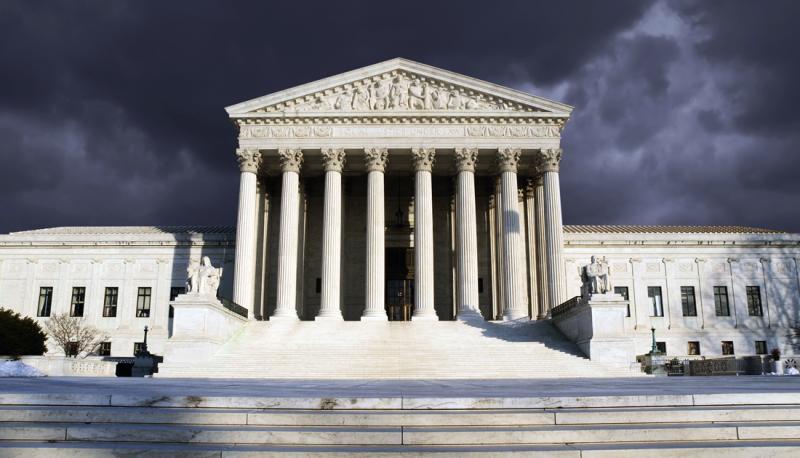“Confirmed Judges, Confirmed Fears” is a blog series documenting the harmful impact of President Trump’s judges on Americans’ rights and liberties. Cases in the series can be found by issue and by judge at this link.
Trump Ninth Circuit judge Patrick Bumatay argued in dissent that the court should uphold the determination of the Bureau of Alcohol Tobacco and Firearms (ATF) refusing to provide information to journalists on the total number of weapons used in crimes that had previously been owned by law enforcement agencies. The majority rejected Bumatay’s view, and ruled that the information should be provided under the Freedom of Information Act (FOIA) in its December 2020 decision in Center for Investigative Reporting v US DOJ.
As part of its work on a report concerning guns formerly owned by law enforcement agencies that have been used in crimes, the Center for Investigative Reporting (CIR) filed a FOIA request with ATF for records showing the total number of weapons “traced back to former law enforcement ownership” annually from 2006 to date. ATF refused, claiming that Congressional appropriations riders from 2005 to 2012 had “forbidden the release” of that information and that the records were accordingly exempt from FOIA. A district court agreed with ATF, and the case went to the Ninth Circuit.
In a 2-1 opinion by Judge Kim Wardlaw, which was joined by George W Bush nominee Judge Milan Smith, the appellate court reversed. Judge Wardlaw explained that for many years, ATF has used the Firearms Tracing System (FTS), an electronic database that contains data for over 6.8 million “traces” ATF has performed, under which ATF traces or tracks recovered firearms back to their previous owners and their manufacturers. ATF has prepared various reports and analyses of this data, some of which are shared with the public, and has at times responded to FOIA requests using FTS.
Beginning in 2005, congressional riders to ATF appropriations legislation restricted the use of ATF funds to provide information under FOIA using FTS. The majority noted that only the 2010 and 2012 riders were relevant in this case, because the 2010 rider implicitly repealed prior riders, and that, therefore, only these riders could apply to the information CIR was requesting. The majority went on to say that although FOIA’s Exemption 3 relieves an agency of the obligation to disclose records “specifically exempted from disclosure by statute,” Congress limited the scope of Exemption 3 in the OPEN FOIA Act of 2009. Specifically, the majority continued, the OPEN FOIA Act provided that any future law could be considered an Exemption 3 statute only if it “requires” withholding with “no discretion” and only if it specifically “cites to” Exemption 3 itself. The majority concluded that the district court was wrong because “[n]either” the 2010 nor 2012 rider “qualified as a withholding statute” since they were both “enacted after the effective date” of the OPEN FOIA Act and “do not cite” to Exemption 3 itself. This holding was important, the majority went on, to vindicate Congress’ effort in the OPEN FOIA law to combat what Congress called “exemption creep” under which an “alarming number” of FOIA exemptions were “snuck into legislation,” harming “the American public’s right to know.” The majority sent the case back to the district court for further proceedings, including determining whether the FTS can produce the information sought by CIR or whether other records would need to be reviewed.
Trump judge Bumatay dissented, based largely on an argument not raised by any party in the litigation. Bumatay maintained that it is an unconstitutional “entrenchment” for one Congress to require that future Congresses include “magical passwords” like the reference to Exemption 3 required by the OPEN FOIA Act in order to supersede previous laws. Bumatay also maintained that even though the riders allowed “publication” of “aggregate data” of the type CIR was requesting, that exception does not apply to “disclosure” of such information under FOIA. The fact that CIR has “pure-hearted reasons” for seeking the information it requested, Bumatay concluded, “does not empower us to rewrite the law.”
The majority responded specifically to Bumatay’s claims. Judge Berzon noted that “no party or amici” ever raised the entrenchment issue in the district or the appellate court, and that when Bumatay first mentioned it at oral argument, it appeared that the government had “deliberately chosen not to raise it.” The government had thus “clearly waived” the defense, the majority went on, which would have required the court to determine whether the riders were “implied repeals” of the OPEN FOIA Act requirement, which the Supreme Court strongly disfavors.
In addition, the majority explained, the “aggregate data” exception does apply to CIR’s request. The “plain meanings” and “FOIA’s use” of the terms “disclosure” and “publication,” the majority continued, make clear that even under the riders, ATF can “release” the information requested as long as doing so would make it “generally known to the public” as in this case. So even if the 2010 or 2012 rider did apply despite the OPEN FOIA Act, the majority concluded, CIR’s FOIA request was proper.
As a result of the majority’s opinion, CIR should be able to obtain the important government data it is seeking to better inform the important public debate on gun safety. If it had been up to Trump judge Bumatay, however, that informant would be concealed.

